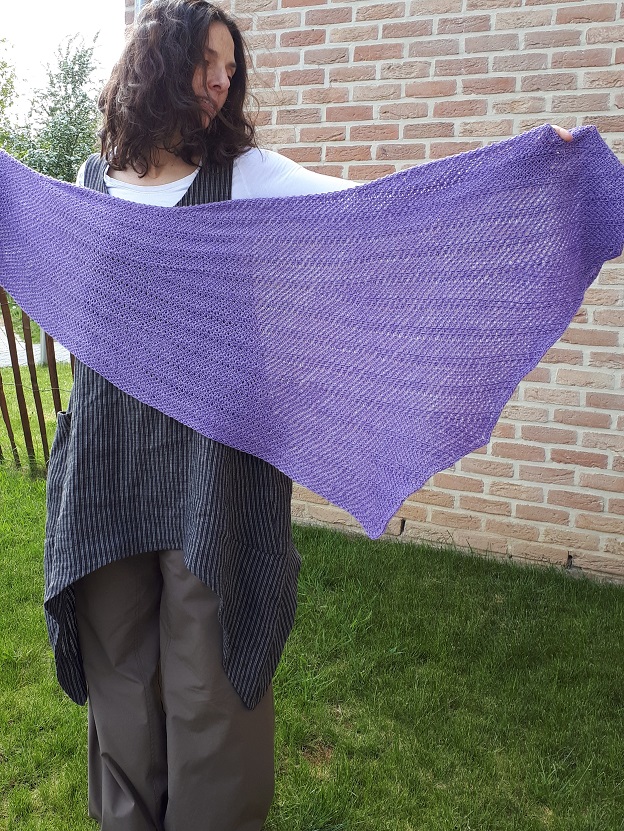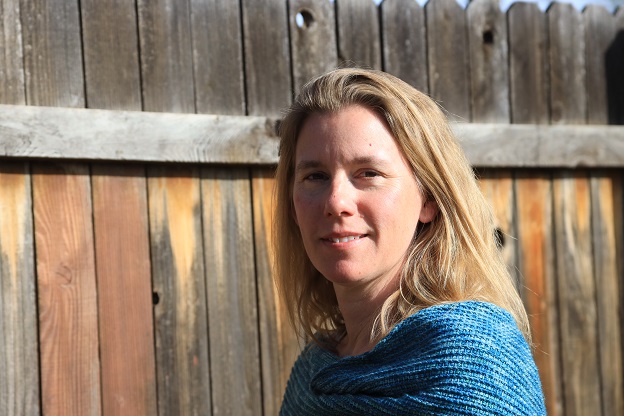One of the great things about Tunisian crochet is that changing colors can be done in multiple ways and give really interesting effects: stripes, mixed colors, motifs, fair isle… In this article, I show you a few things that can be done with Tunisian colorwork techniques. With these few tips I hope you will explore the endless possibilities that changing colors in Tunisian crochet has to offer.
Continue readingFor intérieur (Deep down)
My Tunisian crochet pattern For intérieur (Deep down) is now available on Ravelry. It is a triangular shawl with a textured motif made with crossed stitches. I would say it is a rhythmic pattern. Do you recognize it? It is the project I used to illustrate my article about a simple blocking method.
Continue reading20 questions to TC designer Aklori
I would like to share the work of Tunisian crochet designers and show the diversity and creativity around this technique. So I decided to publish an article about a designer each month. This time I asked 20 questions to Aklori. Find out more about her, see her patterns and projects.
Continue readingKid mohair from la Droguerie
The weather is grey these days. So I dived into my stash and picked what I had in kid mohair from la Droguerie. I had vivid colors, mainly vibrant yellow and nuclear orange. Beautiful colors but what could I do with them? How to combine them?
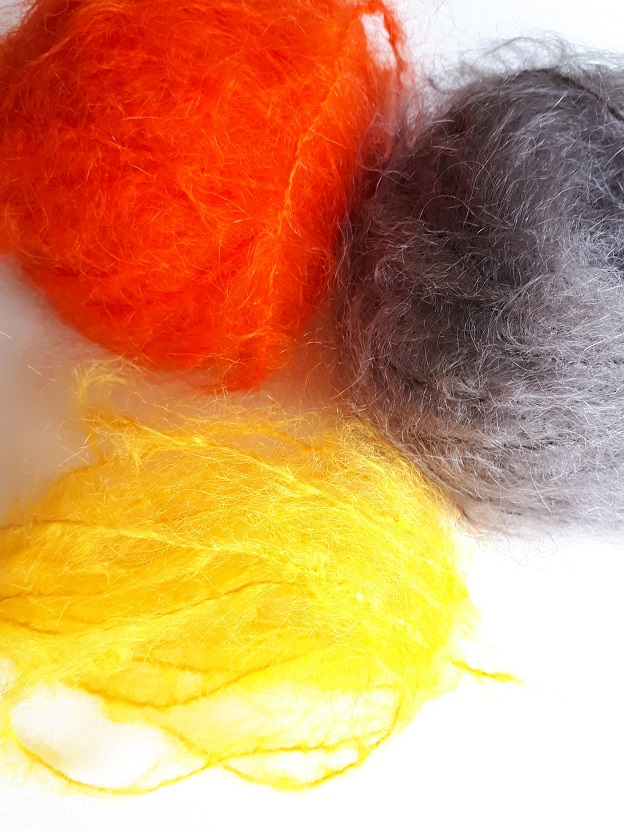
Jardin extraordinaire (Extraordinary garden)
Today I published a new pattern page on Ravelry: Jardin extraordinaire (Extraordinary garden).
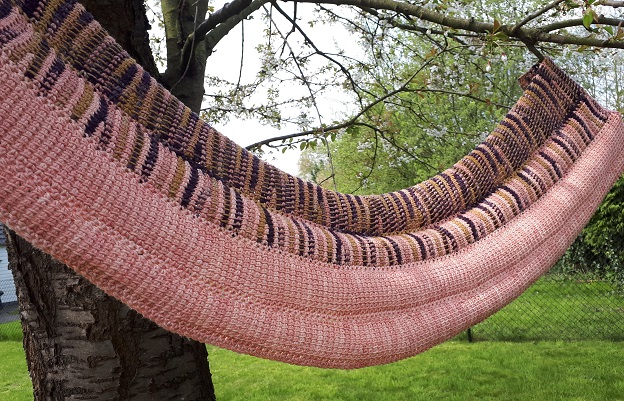
It is a pattern that I designed in collaboration with the Belgian indie dyer Les aiguilles du hérisson. I used her yarn Buisson, 100% cotton, available in multiple colorways, all with natural vegetable dyes. A very soft yarn, that is ideal to work in Tunisian crochet.
My pattern is available for free as part of yarn kits. For the launch, today the 21st of May, get 10% off with the discount code JARDIN10 from the Etsy shop of Les aiguilles du hérisson.
This slightly crescent shawl allows for multiple arrangements in colors display. There are 2 types of kits available:
- multi-color yarns, as in my first project in garance (pink)
- solid color yarns, as in my second project in grey and gold
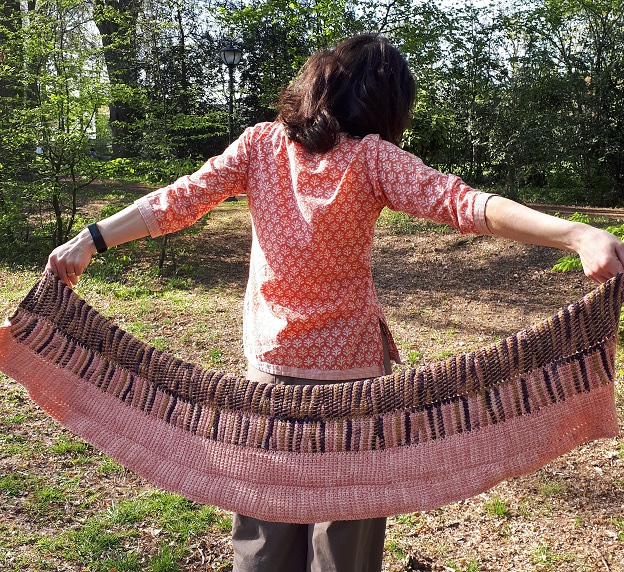
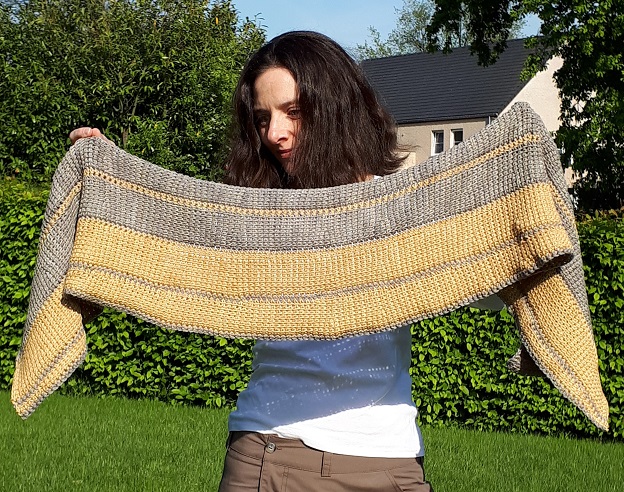
The pattern includes a schematic, detailed instructions and a photo tutorial. Even though this is Tunisian crochet, there is no need for a special hook. A “standard” hook (without ergonomic grip) on which you can hold a maximum of 10 loops will do.
Go and visit the Etsy shop of Les Aiguilles du hérisson. Find the colorways in yarn Buisson that you like best.
Simple wet blocking
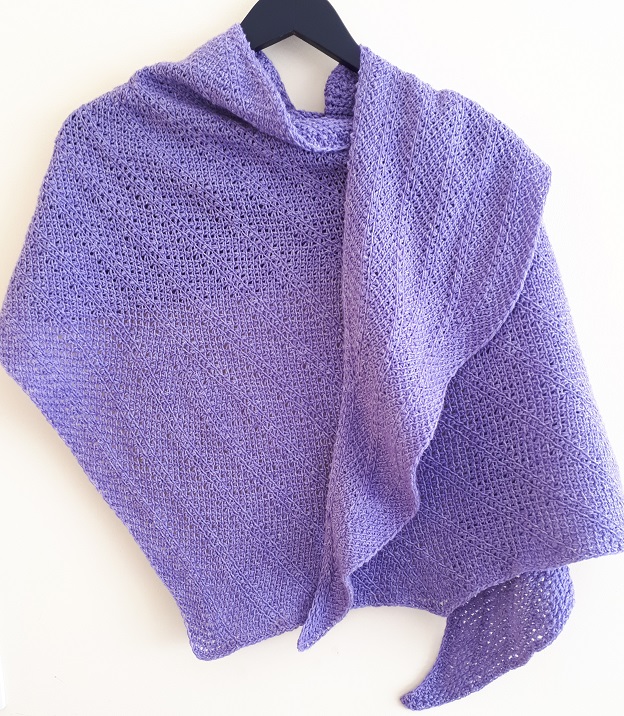
Blocking is a very important step in the making of a knitting or crochet project. The blocking techniques will be different depending on the type of fibre used in the project (wool, linen, cotton, synthetic yarn) and the type of project (blanket made of different squares, shawl, pullover, beanie), but in all cases blocking will help giving a nice finishing touch. Don’t underestimate the power of blocking.
In this article I present a very simple technique (I believe the most basic one) to block a project made of wool.
Continue reading20 questions to TC designer Abbeymade
I’ve been thinking about interviewing Tunisian crochet designers. To show the creative diversity that this technique offers, to get to know designers from all around the world better. This idea evolved into a set of 20 questions. And TC designer Abbey has kindly accepted to play this game and answer these questions.

Decrease on the return pass
On my site you’ll find 7 different types of Tunisian crochet decreases. Today I’d like to go into more technical details about the decrease on the return pass. It’s fairly technical. But illustrated with a video.
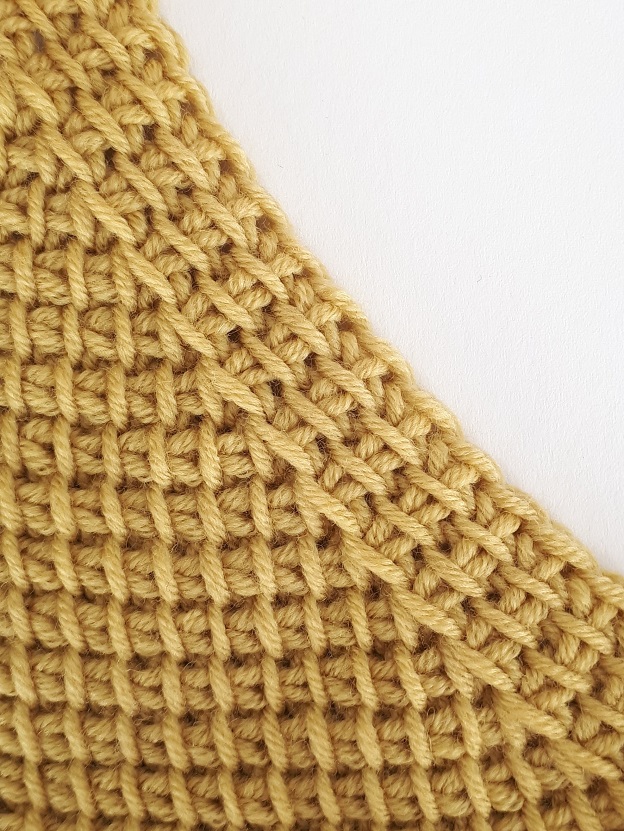
Status on the review of my patterns
As announced in the previous post, right now I’m busy reviewing the patterns I published on Ravelry. By chronological order, from the oldest to the newest. Here is a status on what has been done so far. I’m not finished yet, but I’m progressing, little by little.
Continue readingUpdates of my patterns on Ravelry
A short message today to warn those who have purchased my patterns on Ravelry: I’m reviewing my patterns (essentially the lay out) and, in the coming days, you’ll receive an update notification in your Ravelry library for the patterns you have purchased.
Why do I review my patterns?
I started to publish patterns on Ravelry 3 years ago. Even if instructions are correct (and I take this opportunity to warmly thank my testers for their dedication and support in my work), my editorial style has evolved over time.
Some patterns will have slight updates. But the oldest patterns will be subject to a more thorough review. For example, one of my first patterns, Le bois des rêves.

In the beginning I only wanted to review the graph, but then, while I was at it, I thought I would change a few more things. And since I’m busy with this review, I thought I could as well review the other patterns. Let’s call it a sanity check.
Does it really matter?
The big advantage of Ravelry (well, one of the big advantages) is the access to an electronic library, a place where you can save all the patterns you like. The key word here is “electronic”. It means that you have access to the latest version of the patterns you saved in your library. Forget about errata. The Ravelry library will always give you the latest update of the patterns you saved there. Isn’t it great?

